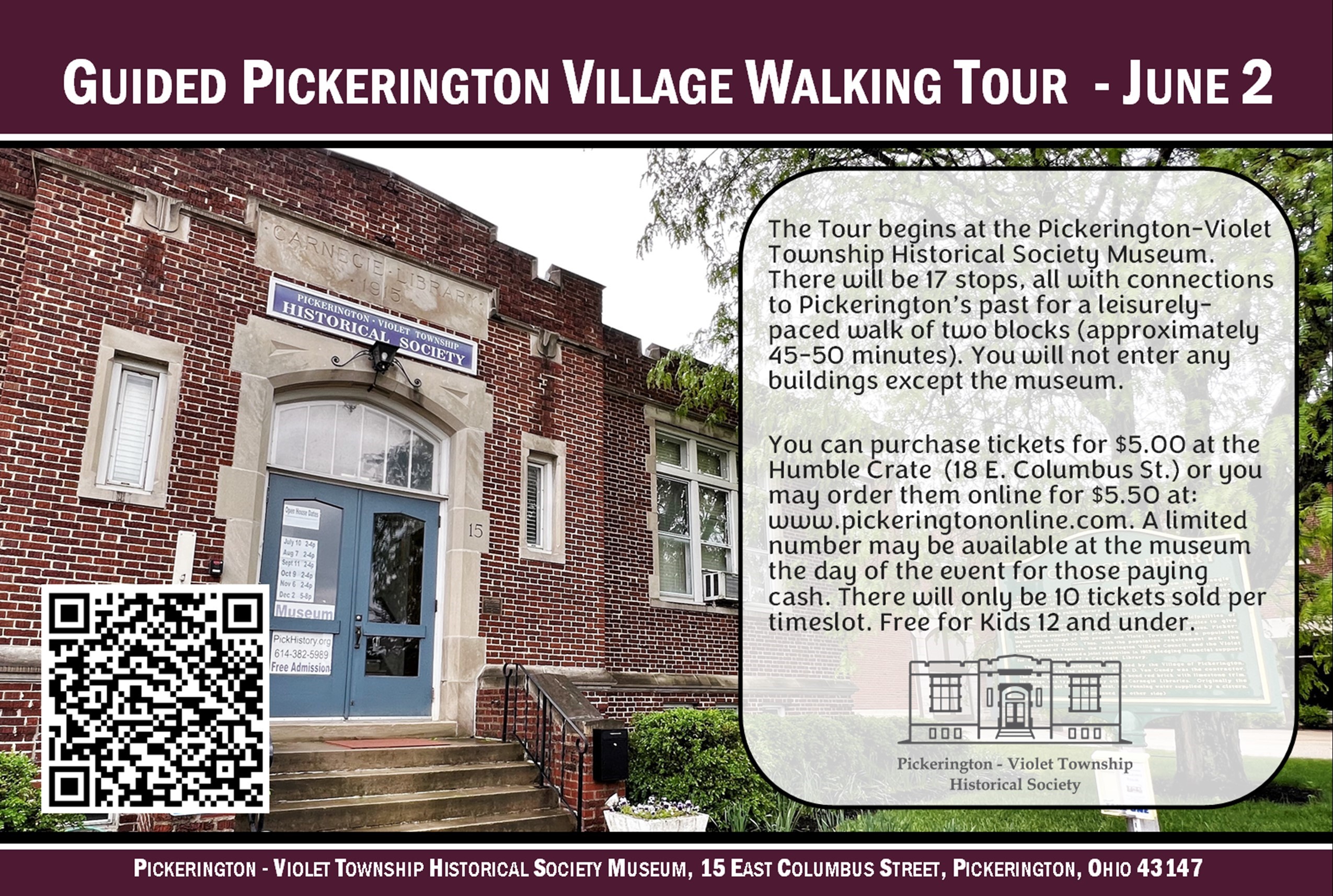
May 11, 2022
Article by Rachel Scofield &
By Pickerington Online Intern
& Central Sophomore Anna Gasser
Teenagers mostly call it “Stone Age”, but others know it as “Kansas”, “Neverland” or simply “the bridge in the park”.
Regardless how it came to be known, hundreds of teens and even some adults and families, flock to this secluded, wooded ravine near downtown Pickerington. However, Stone Age is not a public park, nor has it ever been.
The bridge and railroad tracks are owned by the Watco transportation company, and the woods belong to the Coyote Run State Nature Preserve and are protected by the Ohio Department of Natural Resources (ODNR).
All three entities want an end to the trespassing and damage.
On condition of anonymity, several local teenagers discussed Stone Age with one of Pickerington Online’s interns. To avoid confusion, they have been given nicknames:
- “Raven” – Quiet art kid, uses marijuana
- “Spike” – Stereotypical “delinquent” type, smokes and uses marijuana
- “Link” – Gamer and self-acclaimed nerd, does well in school
- “Dragonfly” – No longer in school, quiet and self-contained
- “Willow” – Honor roll student, stereotypical “goodie two-shoes”
- “Bubbles” – Theatre and choir kid, does well in school
- “August” – Advanced Placement student, friends with “delinquent” types

“It’s just a nice place to hang out,” Raven said. “There are areas where you can go down by the river, and I like to take pictures. There are a lot of animals and interesting plants and seeing those are cool.”
Cataloguing the plants along the tracks has become a hobby for Dragonfly.
“But outside of me specifically, people go there because there’s f**k all else to do in this town that doesn’t involve spending money,” he said. “It’s a natural endpoint, because we all wind up there sooner or later. The park is nice, but it’s full of families and children. If you follow the tracks, it’s peaceful. It’s an escape from the world, but I know people also want to smoke weed there without getting caught.”
To August, visiting Stone Age is just part of the “teenage experience”.
“I go because there’s like four things to do in Pickerington,” August said. “It’s not really somewhere you go, it’s somewhere you end up. You and your friends pile into the car, you go buy Kroger sushi, and then you eat it on the bridge. It’s a feeling of adventure and freedom.
We keep going back because where else is there to go? We feel safe and happy there, while still being able to toe the line of danger. The teens who smoke aren’t one dimensional cut outs with no other motivation. We are complicated, messy people, and the bridge is complicated and messy too.”
Danger of the Tracks
Following the railroad tracks is the most popular route to Stone Age. Messages and symbols painted on the ties let newbies know they are getting closer.
“Following the tracks is therapeutic, knowing where you’re going is reassuring,” Spike said. “It’s free, it’s fun, it’s pretty. It’s illegal but it’s not very dangerous.”
Watco, which owns the tracks, disagrees.

“Walking along and hanging out on, or near, railroad tracks can be very dangerous and deadly,” said Tracie VanBecelaere, Watco Communications Director. “Because of amount of weight behind the locomotive (depending on the number of railcars), it can take up to one or several football fields in length for a train to come to a stop once the brakes are engaged.
People also mistakenly think that trains are very loud and that they will be able to hear one coming in time to get to safety but that isn’t always the case and it’s especially an issue when on a trestle or other locations where safety is not immediately accessible. Last year in the U.S. there were 626 trespass-related fatalities and 526 injuries.
Safety is the number one priority at Watco. We work diligently to ensure the safety of the communities we operate in, our customers, and our team members. We ask that the public respect this and obey the rules that have been put in place to ensure their safety.”
Violet Township Fire Chief Mike Little agreed that playing on or near a railroad track can be very dangerous.
“The ability for an engineer to see a child on the tracks is somewhat limited due to his/her position in the train, time of day, weather, et cetera,” Little said. “The tracks can have switches or other devices that a child can easily get caught in and be unable to get out of without assistance.”
Two years ago, sixteen-year-old Jamie Anderson was hit while walking along the railroad tracks near Carlisle, Ohio. According to the Cincinnati Enquirer, a train engineer spotted a pile of clothes and alerted police that it might be a body.
When the officers arrived on the scene, all that was left of Anderson was a mangled mess of bones and blood. Nearby they found a vaping pen and her pink sneakers.
An investigation determined that Anderson had been so immersed in social media and messaging that she was unaware of the locomotive approaching.
Although the Violet Township Fire Department has not had any recent runs to Stone Age, if someone were to be injured there, reaching them would be a challenge. Rescuers would have to drive the department’s all-terrain vehicle through either Sycamore or Simsbury Park to access the tracks.

Danger of Falling
The railroad trestle sets 15-20 feet above Sycamore Creek and spans almost 100 feet from bank to bank.
While a fall from the bridge could result in serious injury, further into the woods, a bend in the creek has carved a sheer cliff that is twice the height of the bridge. Several trespassers have chosen this area to camp.
Danger from Other Trespassers
Authorities have apprehended suspicious adults lurking around the trestle and young teens have been seen entering the woods with individuals who appear much older.
Vandalism
“It’s fun to look at the signs of life,” said Bubbles. “People leave behind graffiti and footprints, and you wonder about the last person to stand here. It’s also fun to have a secluded river spot to hang out at.”

Dragonfly calls the graffiti “extremely cool”.
“They’re not destroying for destruction’s sake, it’s a form of art,” Dragonfly said. “You get to create a technicolor bridge in the middle of nature.”
The graffiti also extends off the bridge onto trees and signs.
Some of the vandalism incorporates spikes pulled from the railroad ties. A portion of rebar, removed from one of the trestle’s supports, has been positioned as a spike in the water.
Jeff Johnson, Chief of ODNR’s Division of Natural Resources, wants people to know that regardless the intention graffiti is still vandalism.

“What if someone wanted to graffiti up one of these folk’s house or car – I am guessing they likely would not see it as ‘extremely cool’,” Johnson said. “Just because one thinks it isn’t a big problem, it is illegal and could be a big problem for someone such as the landowner. And I can only assume that the railroad thinks using spikes pulled from the tracks or trestle is not cool.”
A network of footpaths has been worn through the woods damaging native flora. Representatives from the preserve explain that soil compaction from the illegal paths is harmful to the natural environment and is a vector for invasive plant species. Food wrappers litter the ground along with empty liquor bottles, drug paraphernalia and condoms. Vandals have stripped bark from some trees and hacked down others.
Someone dug a three-foot by six-foot pit behind a thicket of brush. In another location, a person strung barbed wire across a path at ankle-height.
Representatives of Coyote Run say that the nature preserves exist to protect native flora and fauna and the damage directly opposes that mission.

Trespassing is Illegal
A few of the teens who spoke to Pickerington Online said that trespassing and vandalism are minor offenses too insignificant for police to enforce.
“Did I know it was illegal?” asked Willow. “Yes. – Did I care? No. That’s half of the appeal. No one gives a s**t.”
Link believes “No Trespassing” signs are only to protect landowners from being sued when someone does something stupid on their property.
“I trust myself enough to not worry about other people being liable for my mistakes, and I generally know when a location isn’t safe and just avoid those locations,” Link said. “To be honest I didn’t even know walking on the tracks was illegal. It’s so normalized.”
Neither Raven nor Bubbles knew that walking on railroad tracks was trespassing.
“I’ve never gotten in trouble,” Raven said. “No one has. I guess I didn’t fully know it was illegal.”
August knew that trespassing was illegal but that was not an issue.

“It’s like jaywalking,” August said. “Sure, you’re not really supposed to do it, but no one’s going to stop you.”
Enforcement Increasing
While trespassers may have evaded authorities in the past, recently enforcement has increased. Watco and Coyote Run have instructed the Pickerington Police that they want to press charges. Furthermore, ODNR is considering how to bolster enforcement with state officers and prosecution of offenders when caught.
According to the Ohio Revised Code Section 2911.21, trespassing is a misdemeanor of the fourth degree (fine up to $250.00). However, trespassing on railroad property is a misdemeanor of the first degree (fine up to $1,000.00).
In Ohio, vandalism is a felony, the degree of which is decided by the extent of the damage. For instance, if the amount of physical harm is less than $7,500, the vandalism is considered a fifth-degree felony punishable by a fine up to $2,500 plus the cost of the damage. If the damage exceeds $150,000, the vandalism is considered a third-degree felony.

Littering is also a serious offense. According to Keep Ohio Beautiful, a person found guilty of littering faces a fine up to $500.00 and 60 days in jail.
The property owners have the right to sue for punitive damages as well.
Police Response as a Deterrent
“I’m not going if they seriously prosecute it,” Dragonfly said. “As fun as running away from the cops down a railroad bridge sounds, I have asthma.”
Most of the other teens said they would continue to trespass.
“We’re not going to stop,” Bubbles said. “We’re just going to get sneakier.”













































